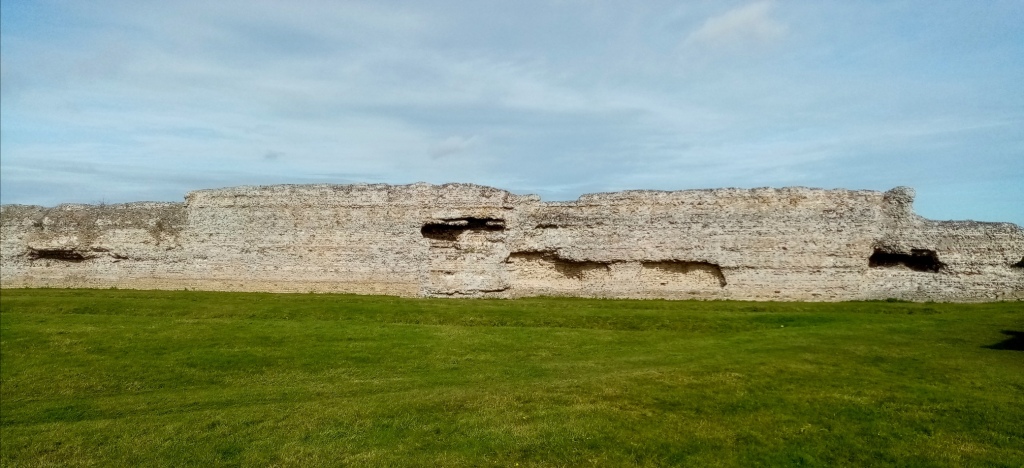Mrs T and I went to Richborough Roman Fort this morning, a few miles from Canterbury. There are high walls still above ground but much more remains underground. We had booked a tour to the excavations, along with several other adults and children. It’s one of those places where the sea has retreated. In Roman times it was an island, linked by a causeway to the mainland, famous for oysters. The former sea is now farmland, the sea a good 2 miles away. All change!
The tour was most interesting, led by people who knew their subject and could speak to the non-expert. At various times between 43 AD and the great Roman retreat, the place was a garrison and a trading port and there is a sizable town under the earth. The bit that was being excavated had been identified as an amphitheatre in Tudor times, but this was the first modern dig after a local surveyor had a peek in 1850 or so. His plan did not fit the one the technology found from drone flights, till the scientists allowed for the shift in magnetic North, which aligned the two plans exactly.
What we could see was of course trenches cut through the soil, but one of them included a section of the wall of the bullring, which was painted: only 17 others have been identified throughout the Empire. Experts are coming down to have a close look and try to interpret the painting, meanwhile the young archaeologists, and a couple of elderly ones, were still digging and cleaning the painting with smokers’ stiff toothbrushes. A nail brush would be too hard.
There was also a wall of what had been thought to be an entrance to the building but turned out to be the holding area for the beasts. Grooves for the hurdles to keep them apart. A few yards away, a complete cat’s skeleton was found, bagged up for analysis, and nicknamed Bagpuss. Coins, pottery, jewellery; there are many finds to be examined and recorded.
And now the archaeologists have to hurry as the farmer wants his land back in the middle of next month. The walls will be covered up again, but carefully, to ensure the safety of the relics for possibly a few hundred more years and to leave the surface safe and sound for cattle to graze over.
It was a privilege to see this amphitheatre; no photographs allowed at the dig, so no photographs in the blog either. The view above shows part of the remaining Roman fort.



